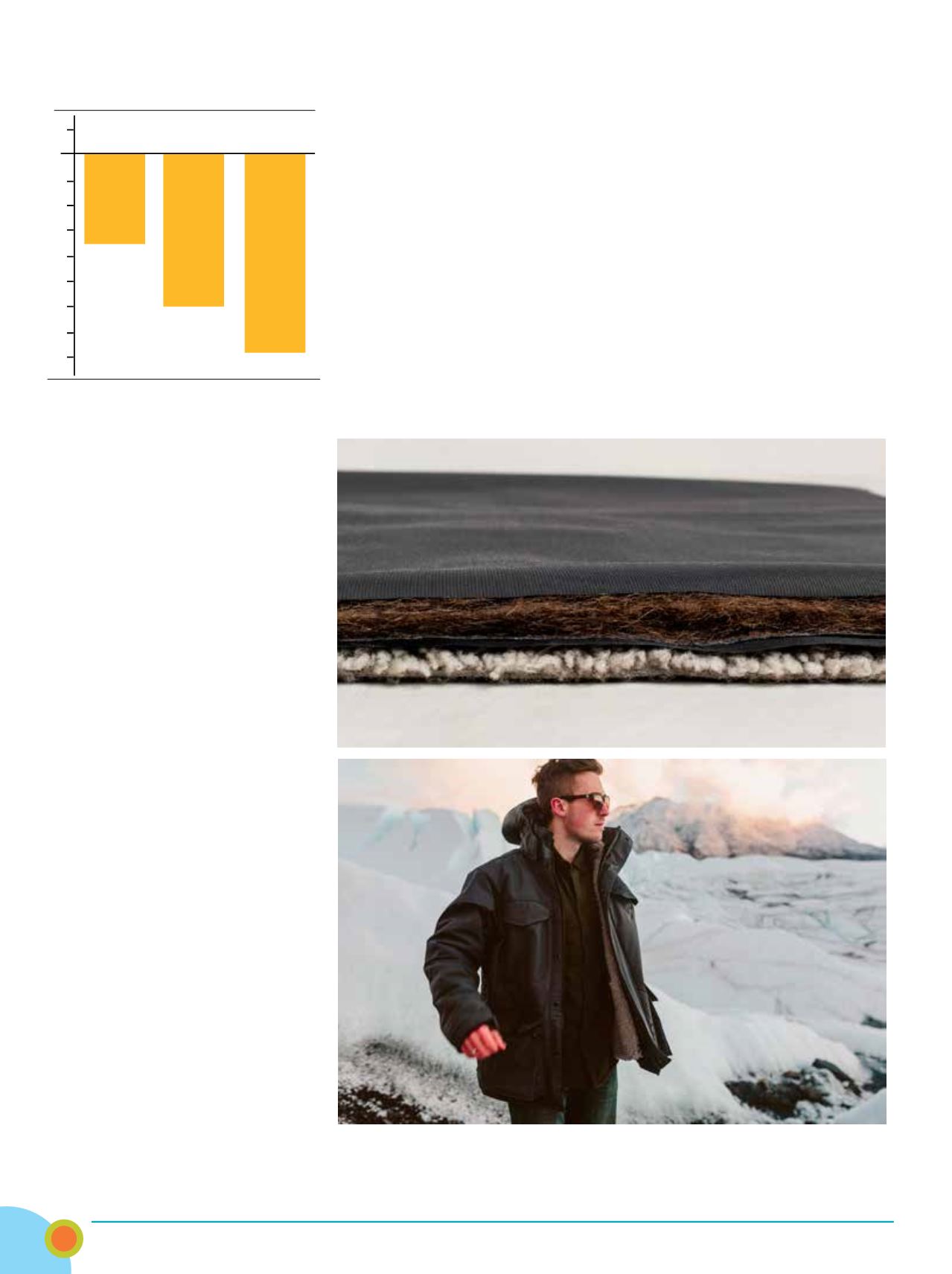

the understanding that all societies,
including traditional communities,
exist in a state of constant flux. We
are always changing; nothing is static.
This runs counter to the (Western)
view that traditional societies should
be preserved as they always have
been. Kora’s view is that nomad
culture and nomad societies are also
changing and adapting to the new
world around them – to survive, they
must. We would like to help them
adapt in a way that protects their
cultural heritage and identity. For
kora, this is about empowerment
and education.”
Indeed, and within that scenario
is the world’s reliance upon ancient
stewardship practices nomadic com-
munities still provide to the grasslands
of the Tibetan Plateau. Not just only
for themselves but for the billions of
inhabitants downstream and ultimately
around the world.
Clearly, expending so much energy
to bring logistically challenged yak to
market implies it must be pretty spe-
cial. It is.
First, it is a very fine fiber but
strong even at 18.3 μm, as used
in kora’s Hima-Layer Original 230
yarns. The fibers are claimed to be
hollow, fire resistant, anti-microbial
and hydrophobic. Kleinwort reports
testing done by SGS shows yak is
40 percent warmer than merino,
weight-for-weight. He also shows
results from a Sheffield Hallam Uni-
versity’s Centre for Sport & Exercise
study concluding yak maintains
homeostasis better than polyester
or merino wool base layers (see
table). The kora website also main-
tains kora’s yak “is 66 percent more
breathable and is 17 percent better
at transporting water vapour away
from the skin.” Anecdotal feedback
from athletes-testers confirms
those assertions when comparing
similar merino.
When all the testing is eventually
finished, there is no doubt, yak will
be among the elite natural fibers, and
kora will take its place among the elite
brands. And in no small way, kora’s
efforts to achieve the trifecta in sus-
tainable development will unquestion-
ably help them get there.
United Under Bison
United by Blue’s founder Brian
Linton is obsessed by water. So
much so, in 2010, he started UBB
and with it a “pledge to remove 1
pound of trash from a river or ocean
for every product UBB sells.” Ac-
cording to UBB’s website, as of this
writing, 312,402 pounds of trash have
been picked up between 155 clean-
up events. Additionally, UBB has
committed to the B-Corp framework
and has been certified since 2011 (its
score is double the median grade).
Then there is the product line, with
each item curated to fit into UBB’s
ideal of doing right while doing good
(Top) Cross section of United By Blue’s B100 bison insulation. The hollow bison fibers
used in this 60% bison/40% recycled polyester non-woven insulation increase the
overall thermal efficiency of the batting, giving it a third party tested 4.5 CLO value.
(Bottom) The Ultimate American Jacket, insulated with B100 insulation. MRSP: $598
Thermal Loss During 1 Hour
Running in - 5C
Source: Sheffield Hallam University’s Centre for Sport & Exercise Science; kora
SHOLA
BASE LAYER
1
0
4
-2
-3
--4
-5
-6
-7
-8
MERINO
BASE LAYER
POLYESTER
BASE LAYER
Mean Relative Temperature Changes (C)
(Continued on page 82)
Inside
Outdoor
|
Summer
2016
32
















